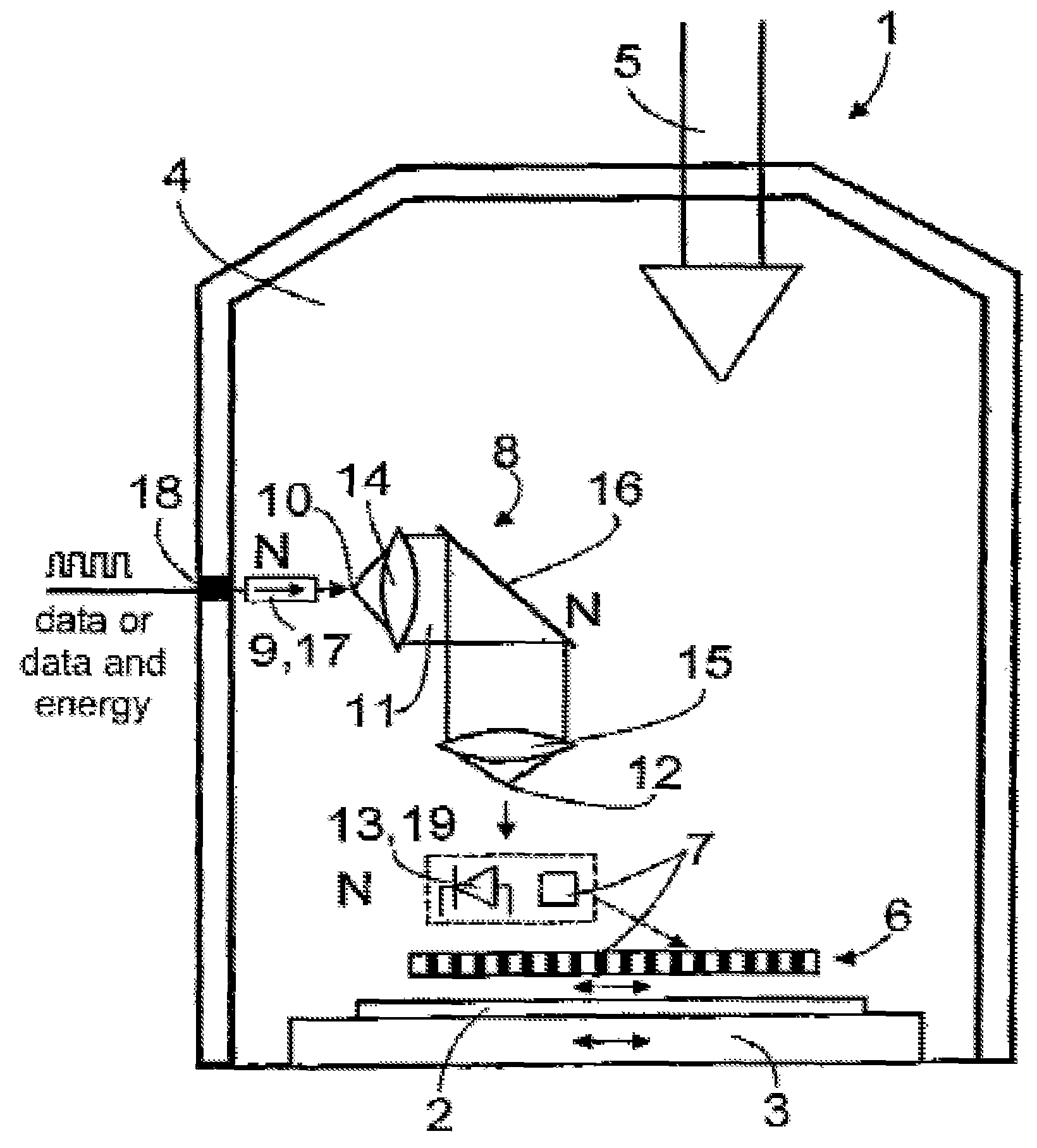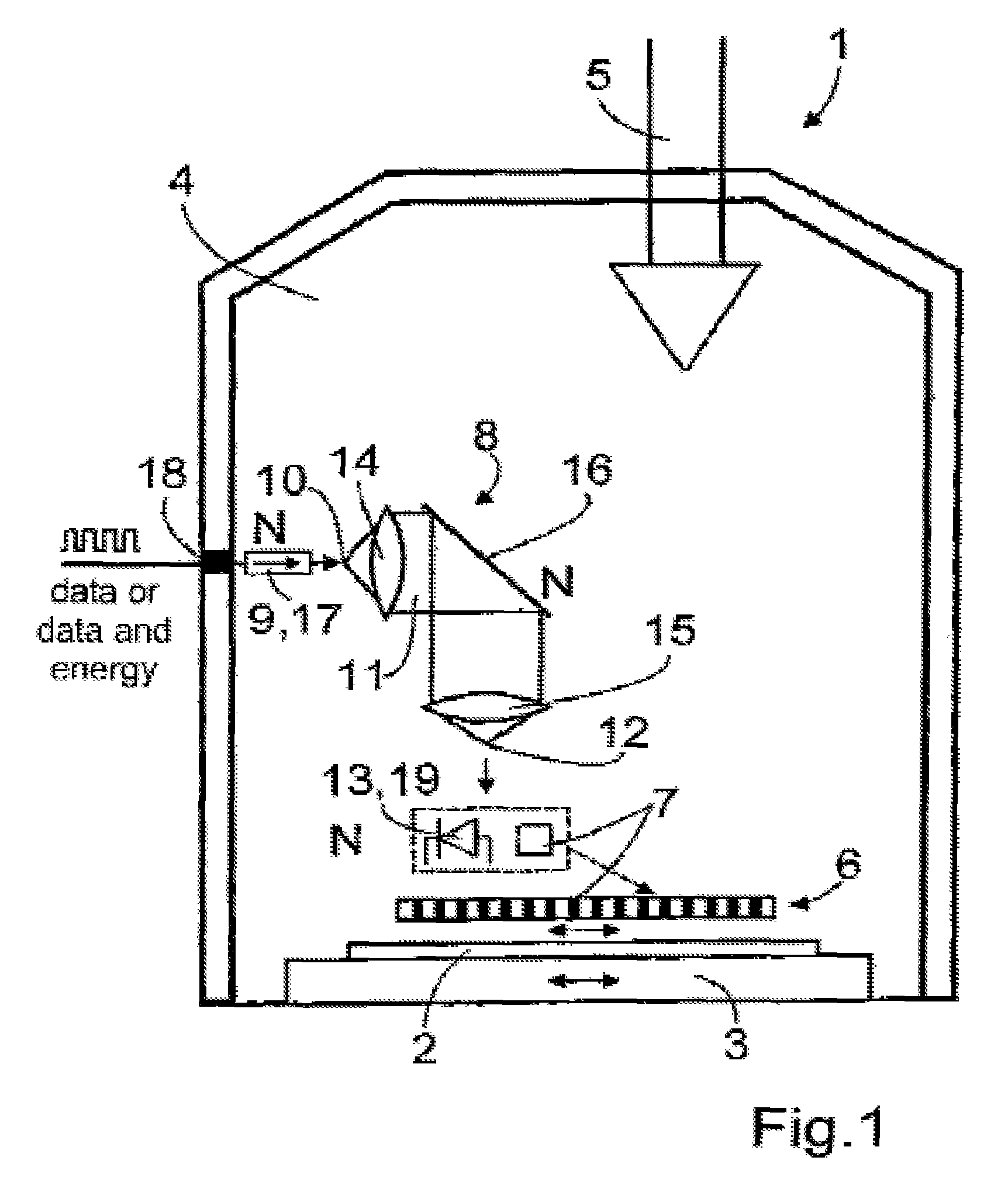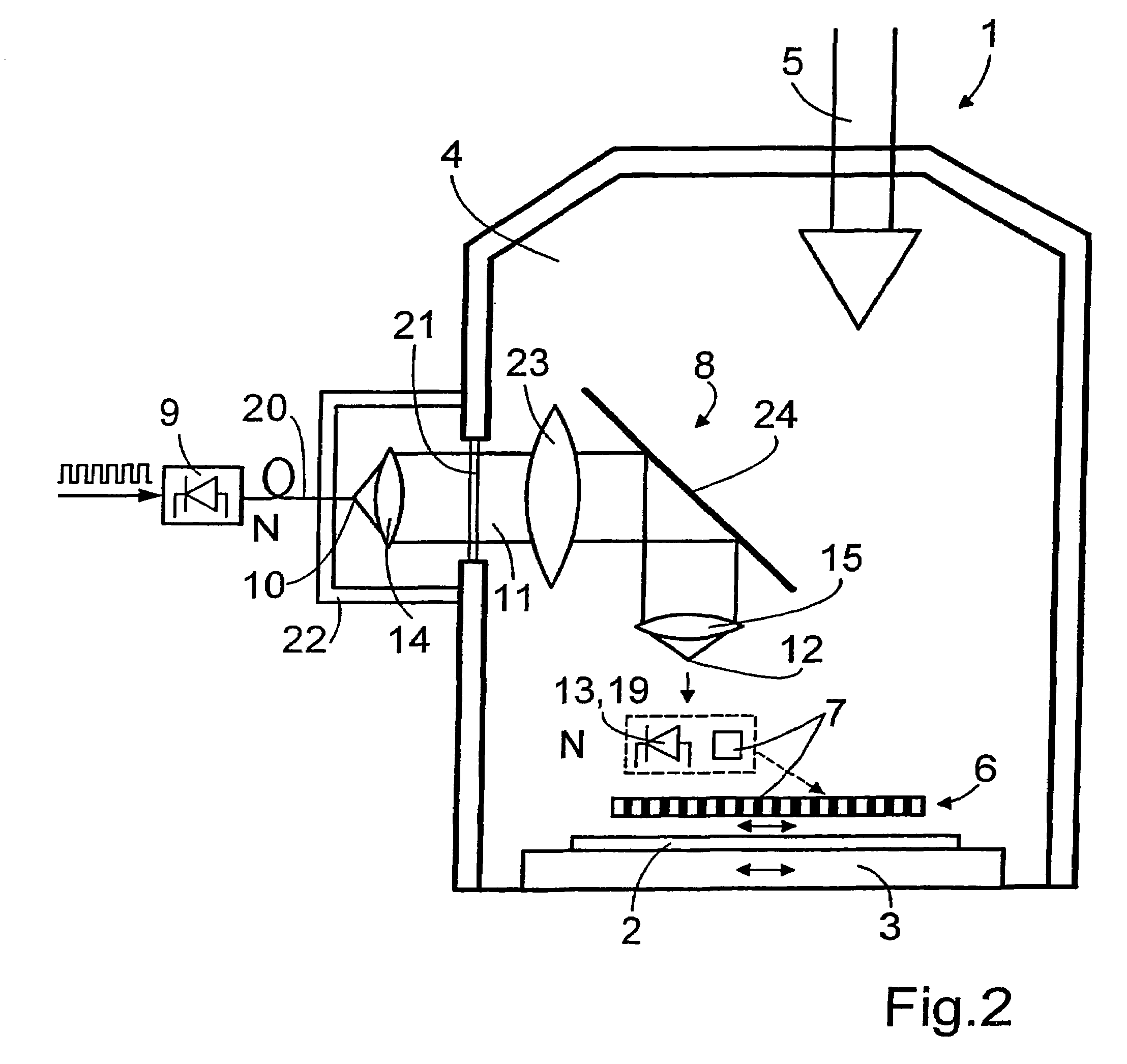Maskless lithography system and method using optical signals
a lithography system and optical signal technology, applied in the field of maskless lithography system, can solve the problems of high cost of mask manufacturing, low through-put of masks, and low spatial arrangement of substrates, and achieve the effect of facilitating electro-optical data transmission
- Summary
- Abstract
- Description
- Claims
- Application Information
AI Technical Summary
Benefits of technology
Problems solved by technology
Method used
Image
Examples
Embodiment Construction
[0029]FIG. 1 schematically shows a section of a maskless lithography system 1 according to the present invention for direct, nano-scaleable structuring of a substrate 2, for instance a wafer made of silicon, which is disposed on a moveable mounting table 3. A cross-section of vacuum chamber 4 is depicted, the vacuum chamber 4 having a potential of 100 kV, for instance, on the inside. A homogeneous, broad particle beam 5, comprising electrons in this instance, is guided from the particle source, which is disposed in high vacuum, from the top into the vacuum chamber 4, wherein it is incident on an addressable pattern generating system 6 disposed above substrate 2. In the pattern generating system 6, which preferably is a programmable aperture plate system, a digital structuring pattern for irradiating substrate 2 with the particle beam 5 is generated with the assistance of a computer. To this effect, individually addressable apertures 7, which form the points of the structure or indiv...
PUM
| Property | Measurement | Unit |
|---|---|---|
| distances | aaaaa | aaaaa |
| distance | aaaaa | aaaaa |
| transmission wavelength | aaaaa | aaaaa |
Abstract
Description
Claims
Application Information
 Login to View More
Login to View More - R&D
- Intellectual Property
- Life Sciences
- Materials
- Tech Scout
- Unparalleled Data Quality
- Higher Quality Content
- 60% Fewer Hallucinations
Browse by: Latest US Patents, China's latest patents, Technical Efficacy Thesaurus, Application Domain, Technology Topic, Popular Technical Reports.
© 2025 PatSnap. All rights reserved.Legal|Privacy policy|Modern Slavery Act Transparency Statement|Sitemap|About US| Contact US: help@patsnap.com



